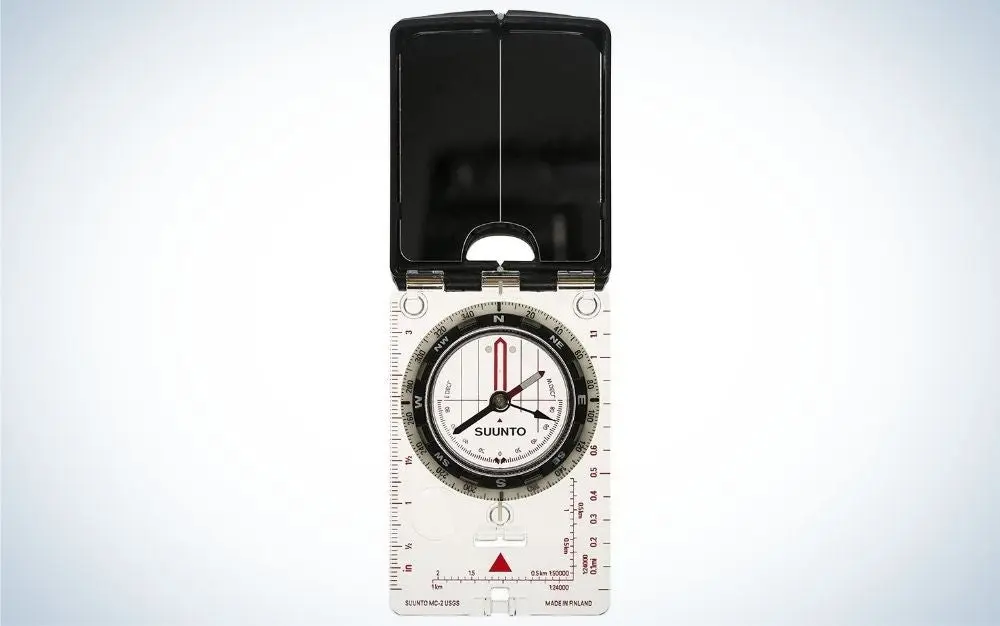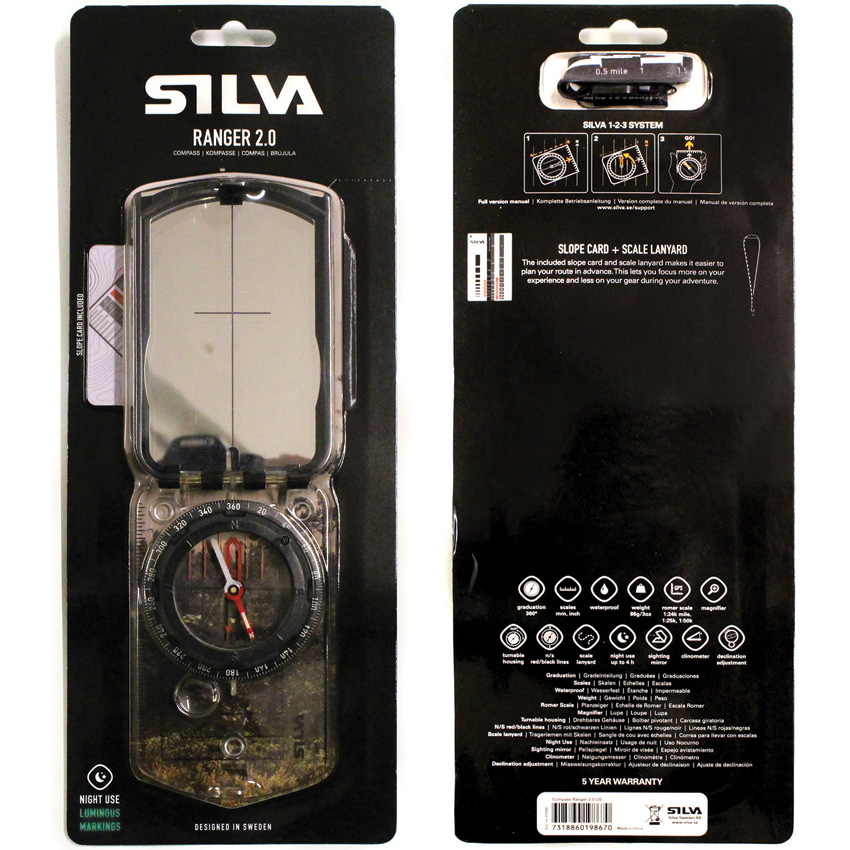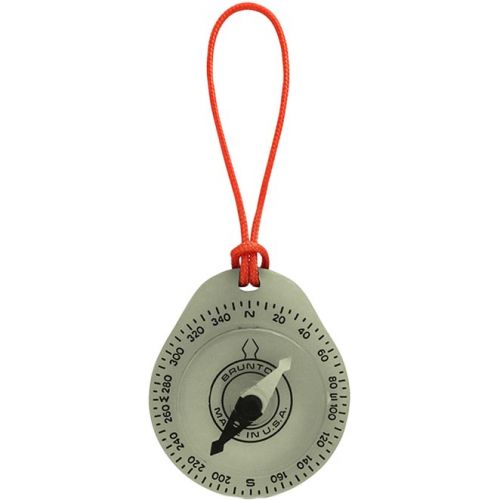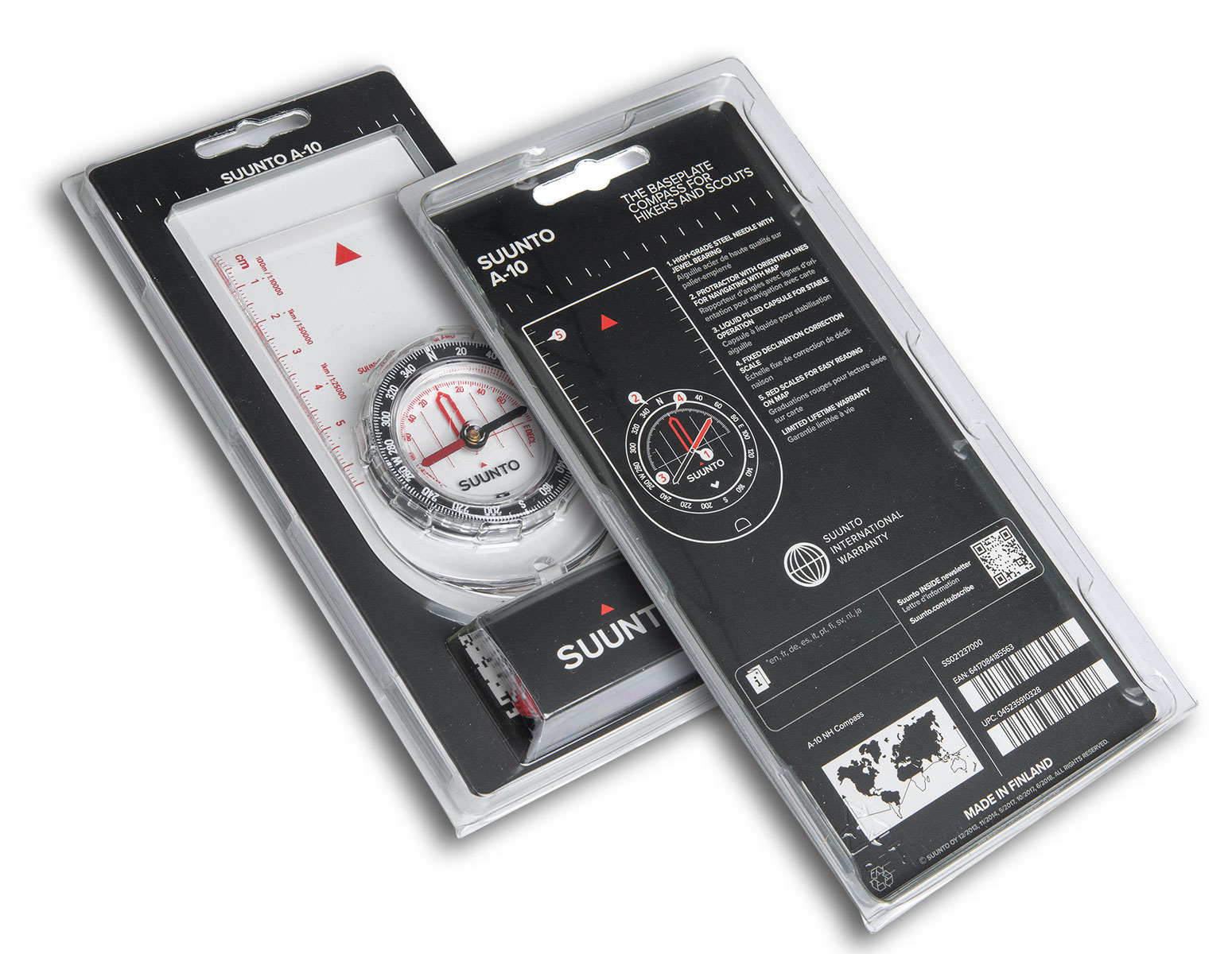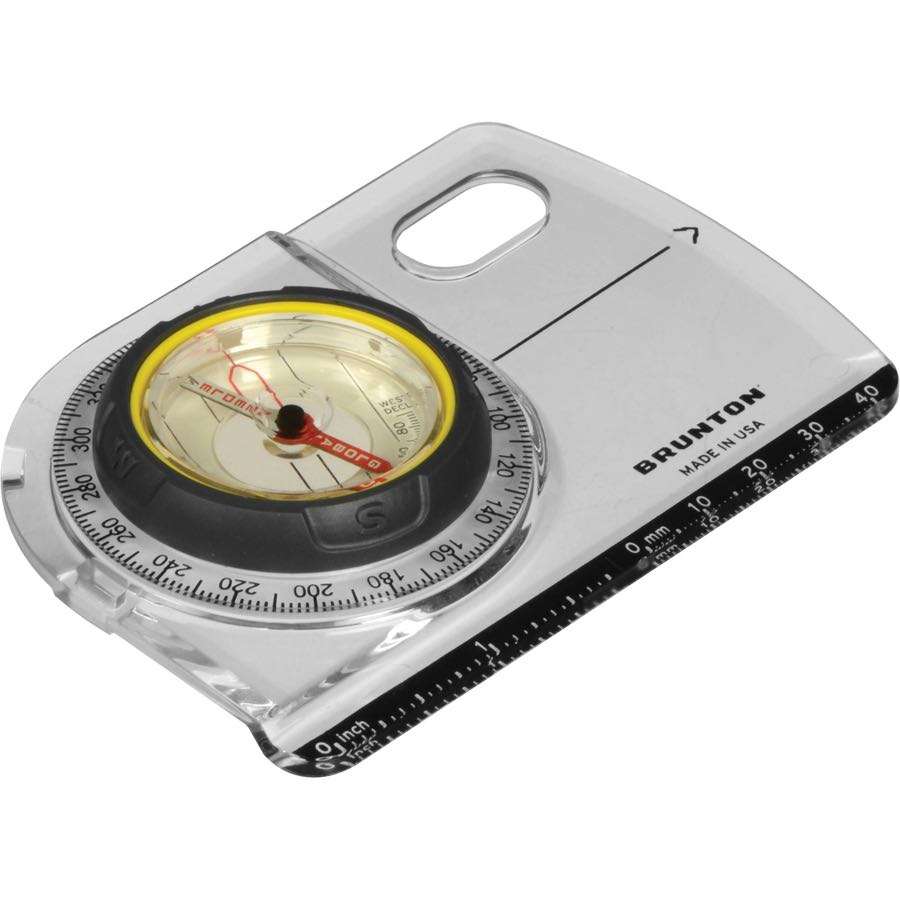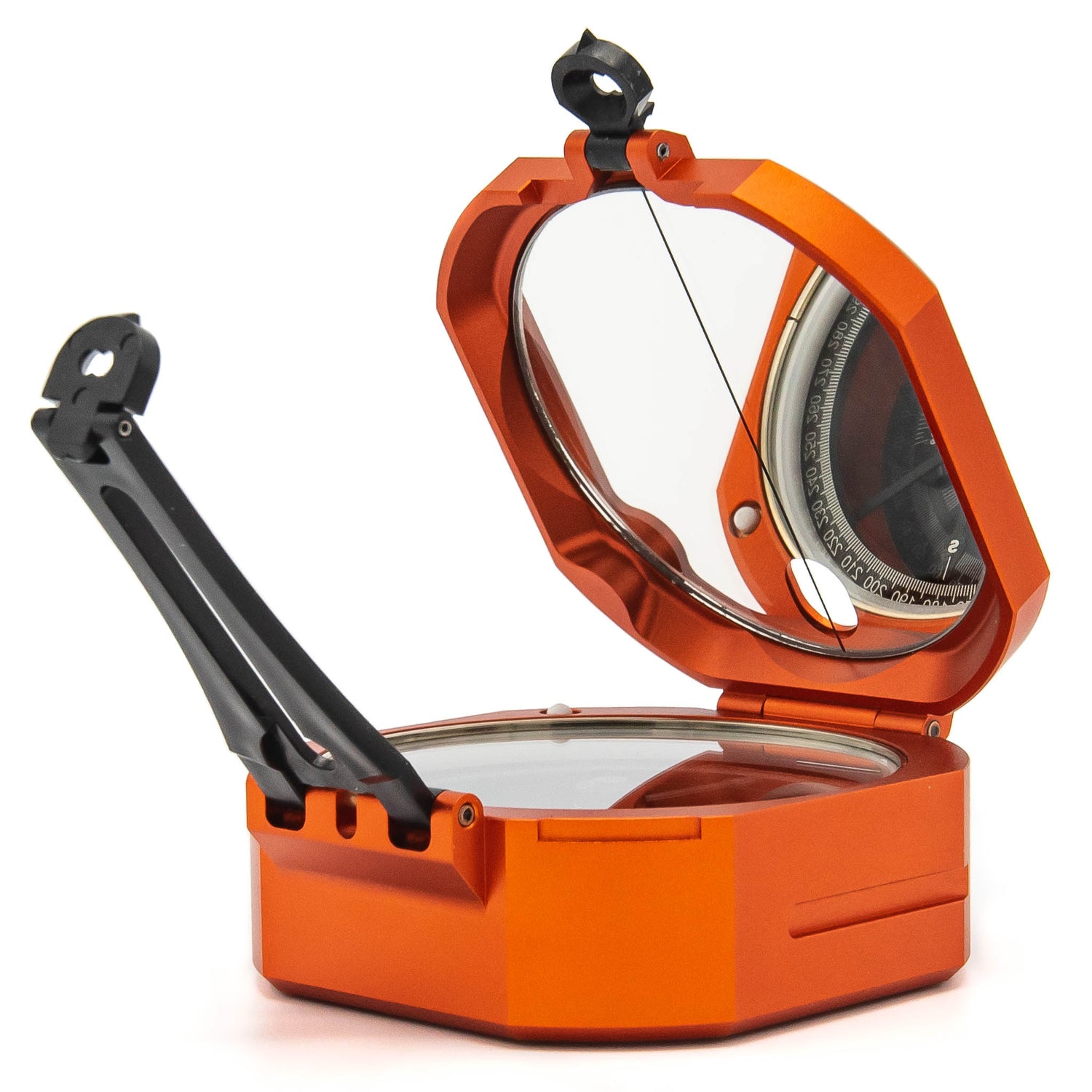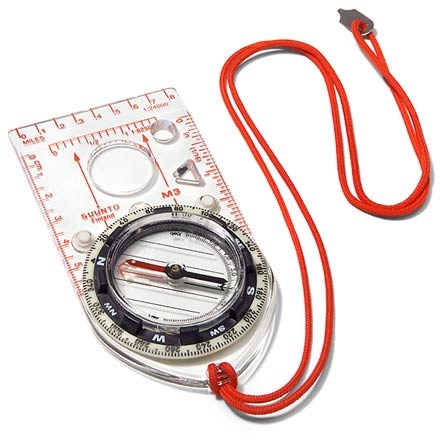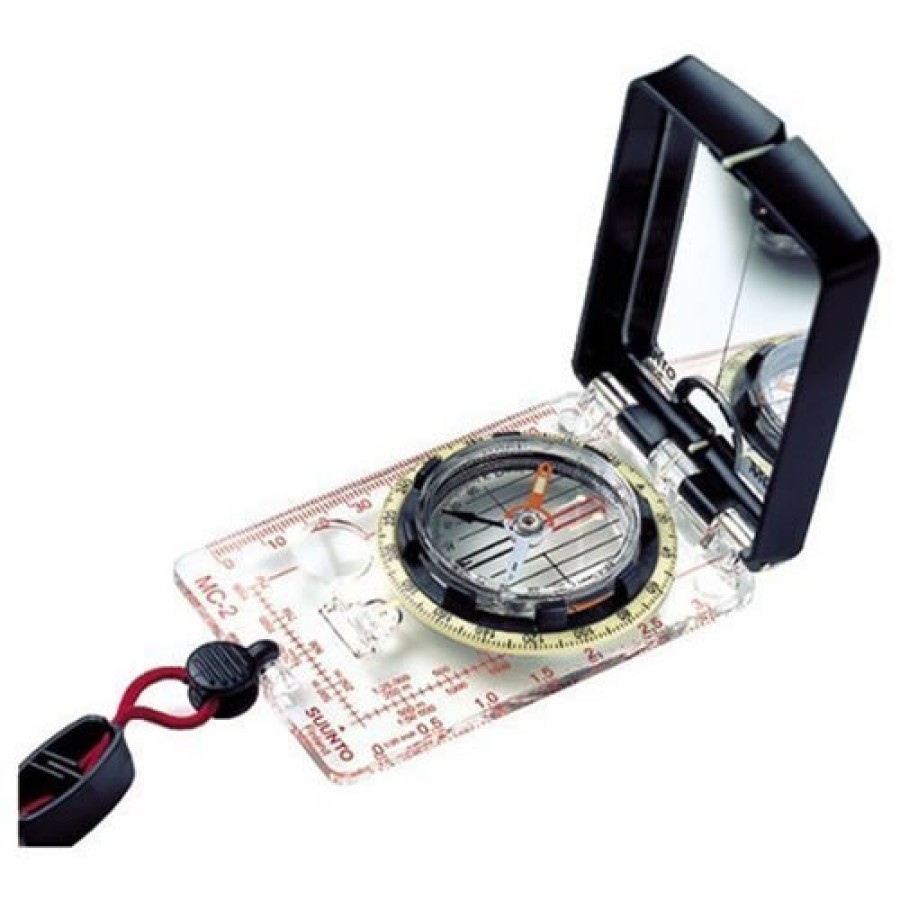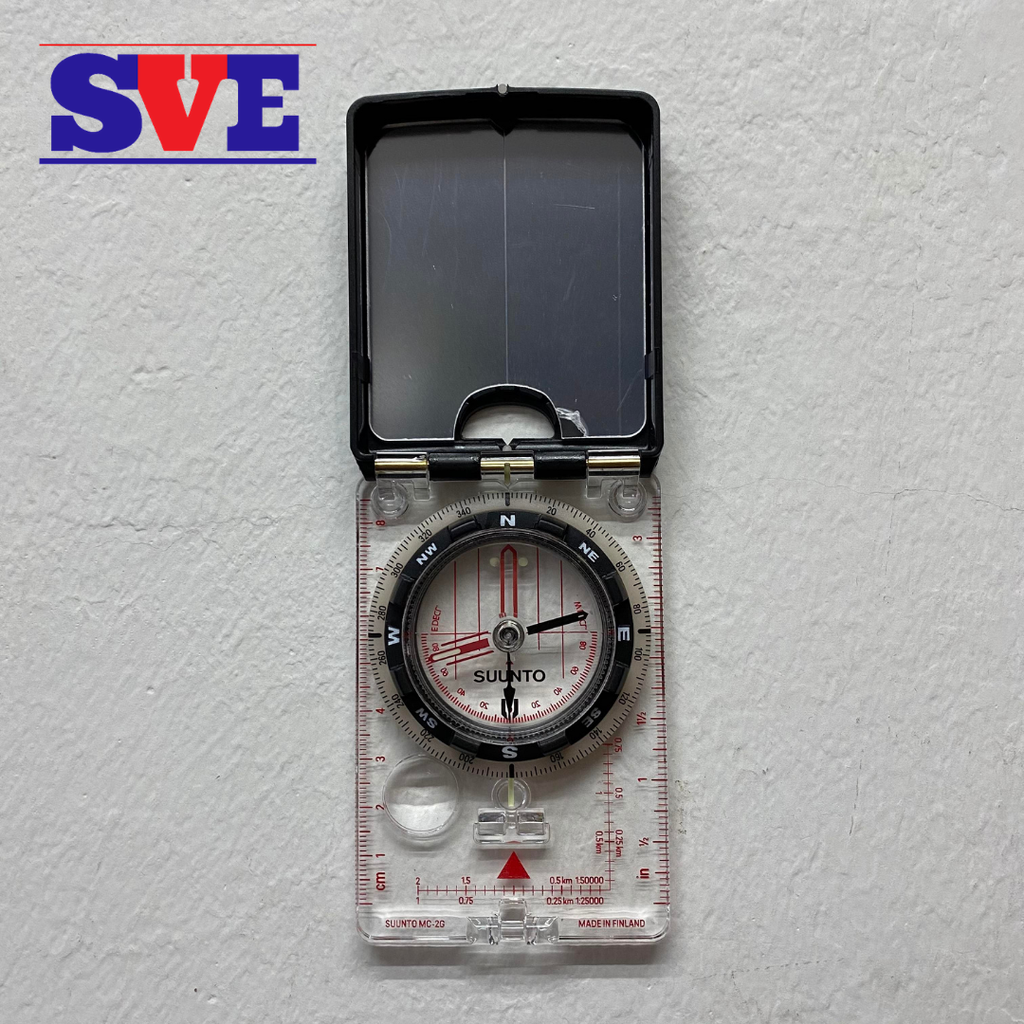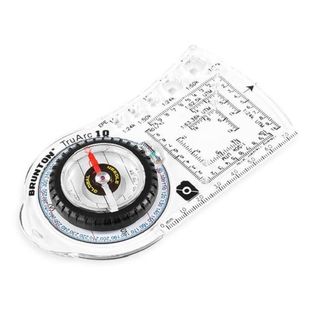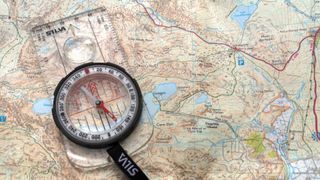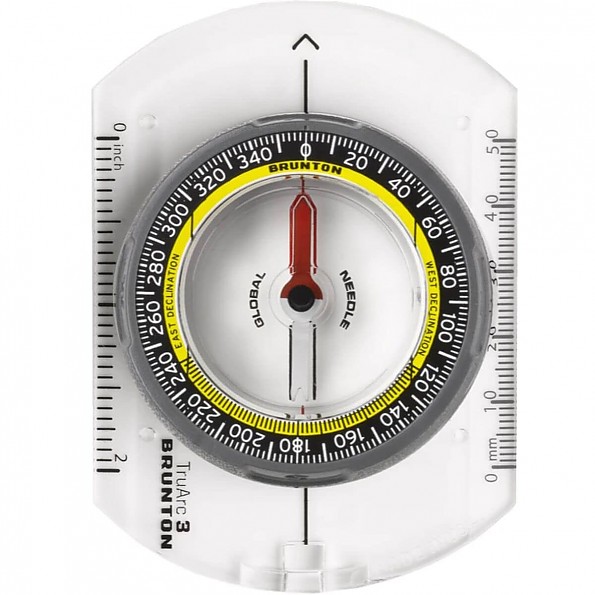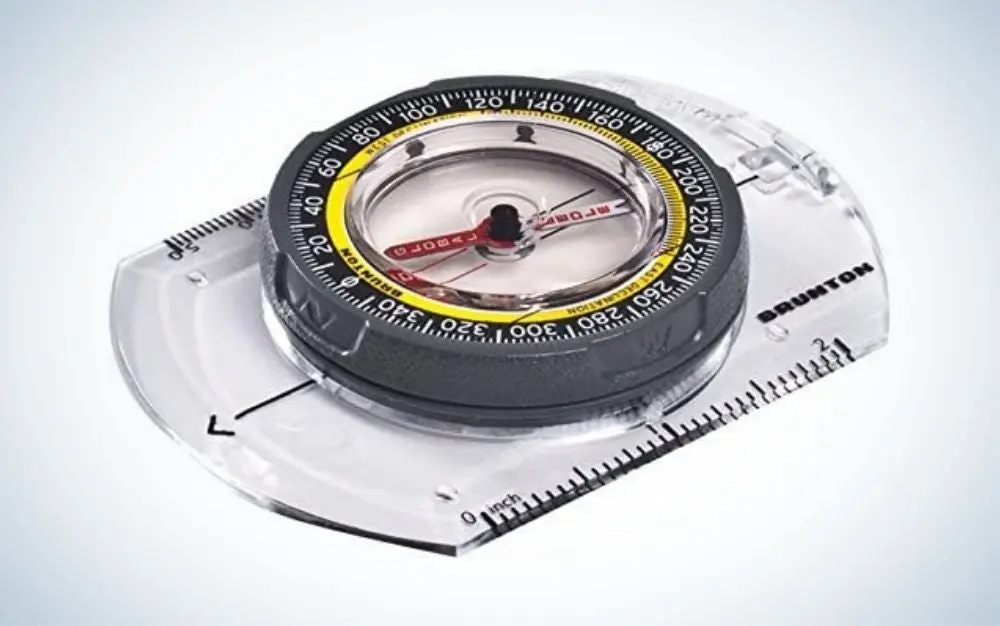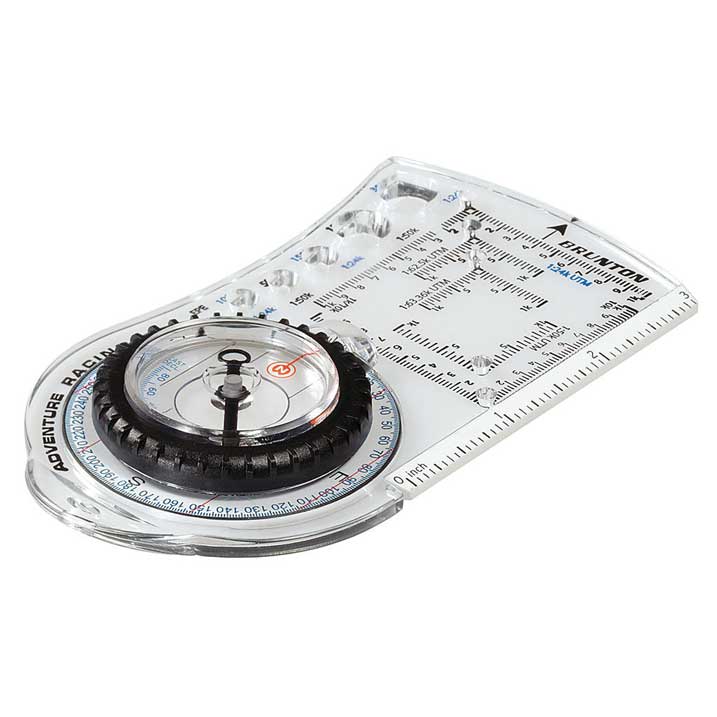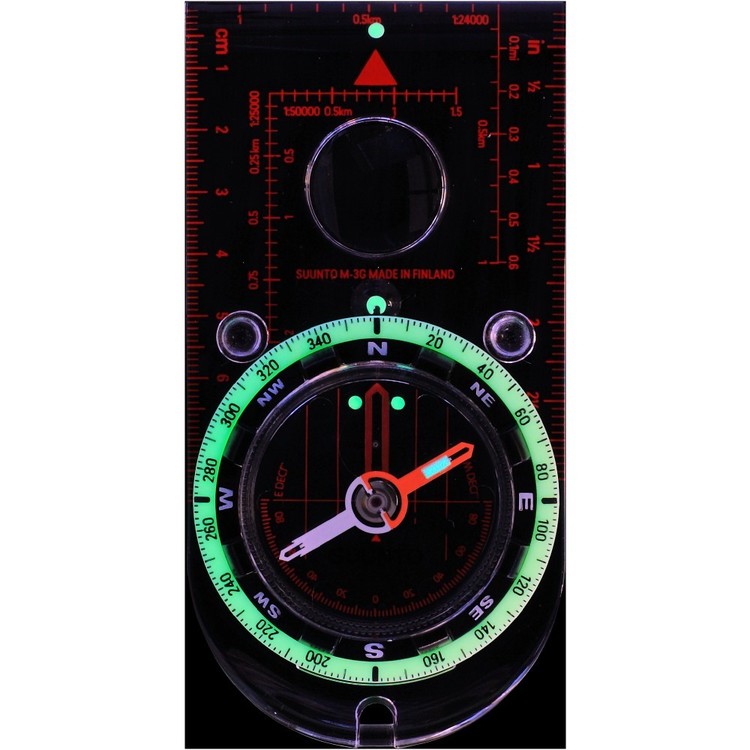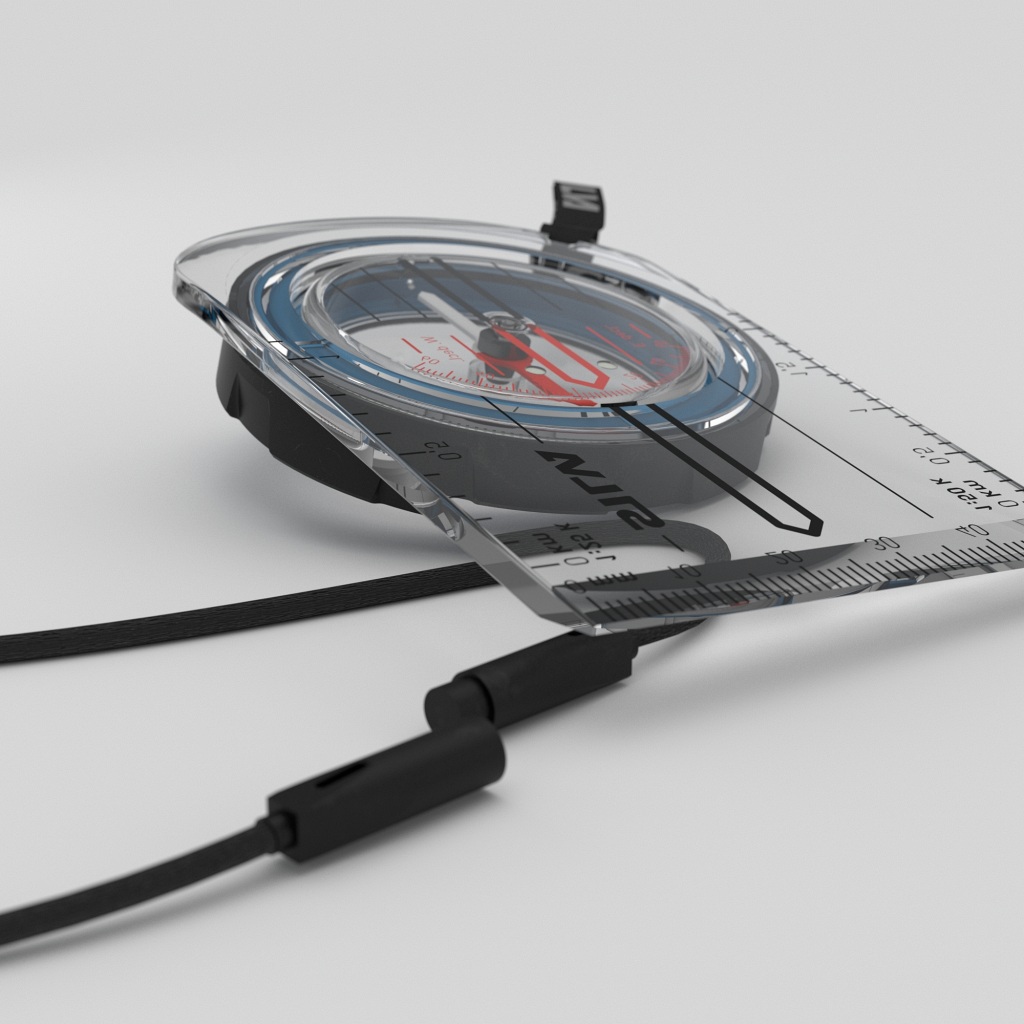Discover Pandipedia
Pandipedia is the world's first encyclopaedia of machine generated content approved by humans. You can contribute by simply searching and clicking/tapping on "Add To Pandipedia" in the answer you like. Learn More
Expand the world's knowledge as you search and help others. Go you!
Suunto MC-2
A versatile all-in-one compass suitable for different levels of navigational skills, featuring magnetic declination adjustment and mirror sighting for accurate long-distance direction finding[1].
Silva Ranger 2.0
A reliable and budget-friendly compass with a clear base plate for easy navigation and similar features to the MC-2, though it lacks a slope indicator[1].

Cammenga Military Compass
Built to military standards, this compass is waterproof and sandproof, featuring a magnifying lens and durable metal construction, designed for various extreme conditions[1].
Brunton 9041 Glow Compass
A compact, user-friendly compass that glows in the dark, making it handy for use at night, though limited in advanced navigational capabilities[1].
Suunto A-10
An affordable baseplate compass suitable for beginners, designed for basic route finding and getting bearings without complex features[1].
Coghlan’s Ball-Type Pin-On Compass
A simplistic and lightweight pin-on compass that offers basic directional assistance by showing North, making it easy to carry[1].
Silva Expedition Type 4
Highly regarded for its lightweight design and precision, ideal for military training and international expeditions with various features for detailed mapping[4].
Suunto M-3 D Leader
A well-established compass combining reliability with ease of use, suitable for various outdoor activities like hiking and skiing, featuring glow-in-the-dark markings[2].
Suunto MC-2 Global
A compass that can operate in both hemispheres with a declination adjustment feature, ideal for serious adventurers needing accurate navigation[2].
Brunton TruArc 10
A global compass with a tool-free declination adjustment, designed for easy use and accurate navigation in both northern and southern hemispheres[4][5].
Silva Ranger
A compact compass that is reliable for both hiking and orienteering, offering essential features while minimizing weight and size[4].
Suunto AIM-6 NH
Designed for quick access and use in racing and orienteering, allowing for fast directional reading amidst challenging environments[2].
Cammenga 3H Compass
A durable, military-grade compass with tritium micro-lights for low-light visibility and a reputation for sturdiness under rough conditions[1][5].
Silva 54 Compass
A straightforward design aimed at amateur navigators, great for basic orienteering and easy to read with clear markings[4].
Brunton 40B Compass
A precise instrument that allows easy declination adjustments and accurate readings, making it a solid choice for navigational purposes[3].
Suunto M-3 Global
A compact and durable compass that is well-suited for both casual hikers and more serious navigators, featuring easy adjustment for declination[2].
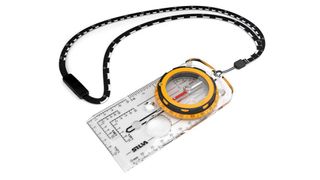
Silva Type 4
A versatile baseplate compass known for its accuracy and reliability, commonly used in various navigation scenarios[4].
Coghlan’s Function Whistle with Compass
A handy, lightweight option that combines the utility of a compass with an integrated whistle for emergencies[2].
Suunto AIM-8 NH
An advanced thumb compass suitable for rapid navigation during activities like adventure racing and orienteering[4].
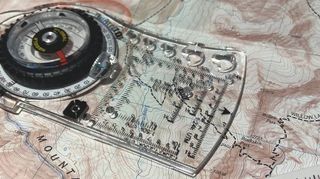
TruArc 10 Compass
Features a balanced needle for increased accuracy and ease of use, equipped with both metric and standard measurements[5].
Brunton ReCompass
This eco-friendly option combines necessary features with a straightforward design, making it ideal for new navigators[3].
Silva Field Compass
Known for its innovative design, it features a stable needle and additional tools for accurate directional readings[4].
Let's look at alternatives:
- Modify the query.
- Start a new thread.
- Remove sources (if manually added).
- Request a manual search from our human research team.

GSEs is kind of the Swiss army knife to the browser.
The Witness[1]
Browsers need a backstop. So if browsers have a choice, they're giving users a Swiss army knife.
The Witness[1]

You're drawing a conclusion from the big 1 model, that people are not using a Swiss army knife, that they're just using a knife.
MR. DINTZER[1]
Let's look at alternatives:
- Modify the query.
- Start a new thread.
- Remove sources (if manually added).
- Request a manual search from our human research team.
Get more accurate answers with Super Search, upload files, personalised discovery feed, save searches and contribute to the PandiPedia.

The CL1 biocomputer operates by integrating human neurons on a silicon chip, utilizing sub-millisecond electrical feedback loops to process information. It employs a closed-loop system where electrical stimuli inform the cultured neurons about the x and y positions of a virtual ball in a Pong-like game. The neural cells generate electrical activity in response, controlling a virtual paddle and allowing them to dynamically adapt their responses, mimicking aspects of intelligence[2][1].
Additionally, the CL1 features a life-support system that maintains the neurons for up to six months, regulating temperature, nutrient supply, and waste filtration. This setup enables advanced experimentation on neuronal circuits and reciprocal exchanges with simulated environments[2].
Let's look at alternatives:
- Modify the query.
- Start a new thread.
- Remove sources (if manually added).
- Request a manual search from our human research team.

Top-K is a sampling setting used in Large Language Models (LLMs) to restrict the predicted next token to come from tokens with the top predicted probabilities[1]. Like temperature, Top-K controls the randomness and diversity of generated text[1].
Top-K sampling selects the top K most likely tokens from the model’s predicted distribution[1]. The higher the Top-K, the more creative and varied the model’s output; the lower the Top-K, the more restrictive and factual the model’s output[1]. A Top-K of 1 is equivalent to greedy decoding[1].
If temperature, top-K, and top-P are all available, tokens that meet both the top-K and top-P criteria are candidates for the next predicted token, and then temperature is applied to sample from the tokens that passed the top-K and top-P criteria[1]. If only top-K or top-P is available, the behavior is the same, but only the one top-K or P setting is used[1].
If temperature is not available, whatever tokens meet the top-K and/or top-P criteria are then randomly selected from to produce a single next predicted token[1].
If you set temperature to 0, top-K and top-P become irrelevant–the most probable token becomes the next token predicted[1]. If you set temperature extremely high (above 1–generally into the 10s), temperature becomes irrelevant and whatever tokens make it through the top-K and/or top-P criteria are then randomly sampled to choose a next predicted token[1].
If you set top-K to 1, temperature and top-P become irrelevant[1]. Only one token passes the top-K criteria, and that token is the next predicted token[1]. If you set top-K extremely high, like to the size of the LLM’s vocabulary, any token with a non-zero probability of being the next token will meet the top-K criteria, and none are selected out[1].
Let's look at alternatives:
- Modify the query.
- Start a new thread.
- Remove sources (if manually added).
- Request a manual search from our human research team.

Token limits significantly influence reasoning traces in Large Reasoning Models (LRMs). As problem complexity increases, there is an observable pattern where LRMs initially use more tokens for reasoning but then exhibit a counterintuitive reduction in reasoning effort despite remaining below their generation limits. This trend indicates a fundamental scaling limitation in their reasoning capabilities relative to problem complexity, leading to performance collapse at higher complexities[1].
Moreover, the inefficiencies in reasoning processes become evident as models often explore incorrect solutions, wasting token budgets, and their ability to self-correct diminishes[1]. Ultimately, these token dynamics affect the overall effectiveness of reasoning in these models.
Let's look at alternatives:
- Modify the query.
- Start a new thread.
- Remove sources (if manually added).
- Request a manual search from our human research team.
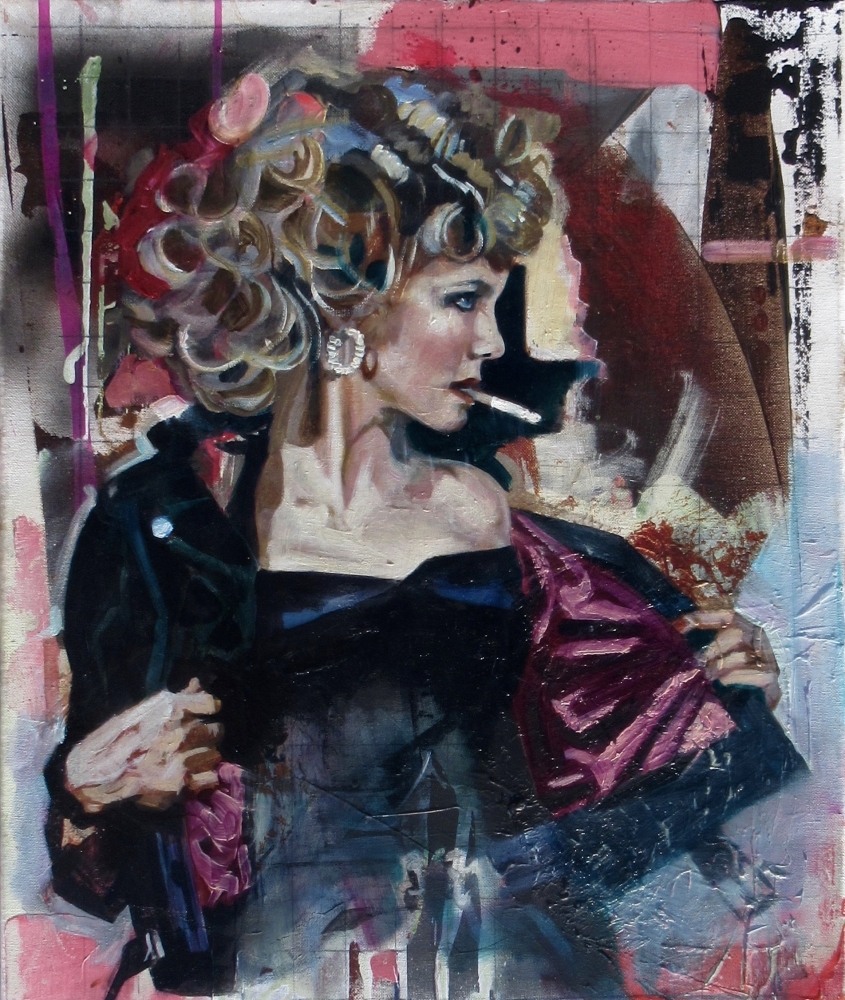
Addressing Social Justice and Inequality
Contemporary art serves as a powerful vehicle for spotlighting issues of social justice and inequality. Artists such as Ai Weiwei and Kara Walker use their works to critique and highlight human rights abuses and systemic racism. Ai Weiwei's installations frequently critique the Chinese government's human rights policies, while Kara Walker’s silhouettes and sculptures examine the enduring impacts of slavery and racial discrimination in America[1].
Furthermore, art plays a crucial role in social activism by leveraging its visual, emotional, and narrative capacities to provoke critical thought and inspire change. Socially engaged art involves direct collaboration with communities and often addresses significant social issues, fostering a sense of unity and collective purpose[4]. This form of art can stimulate dialogue and promote healing, effectively making art a catalyst for societal transformation[8].
Exploring Identity and Gender
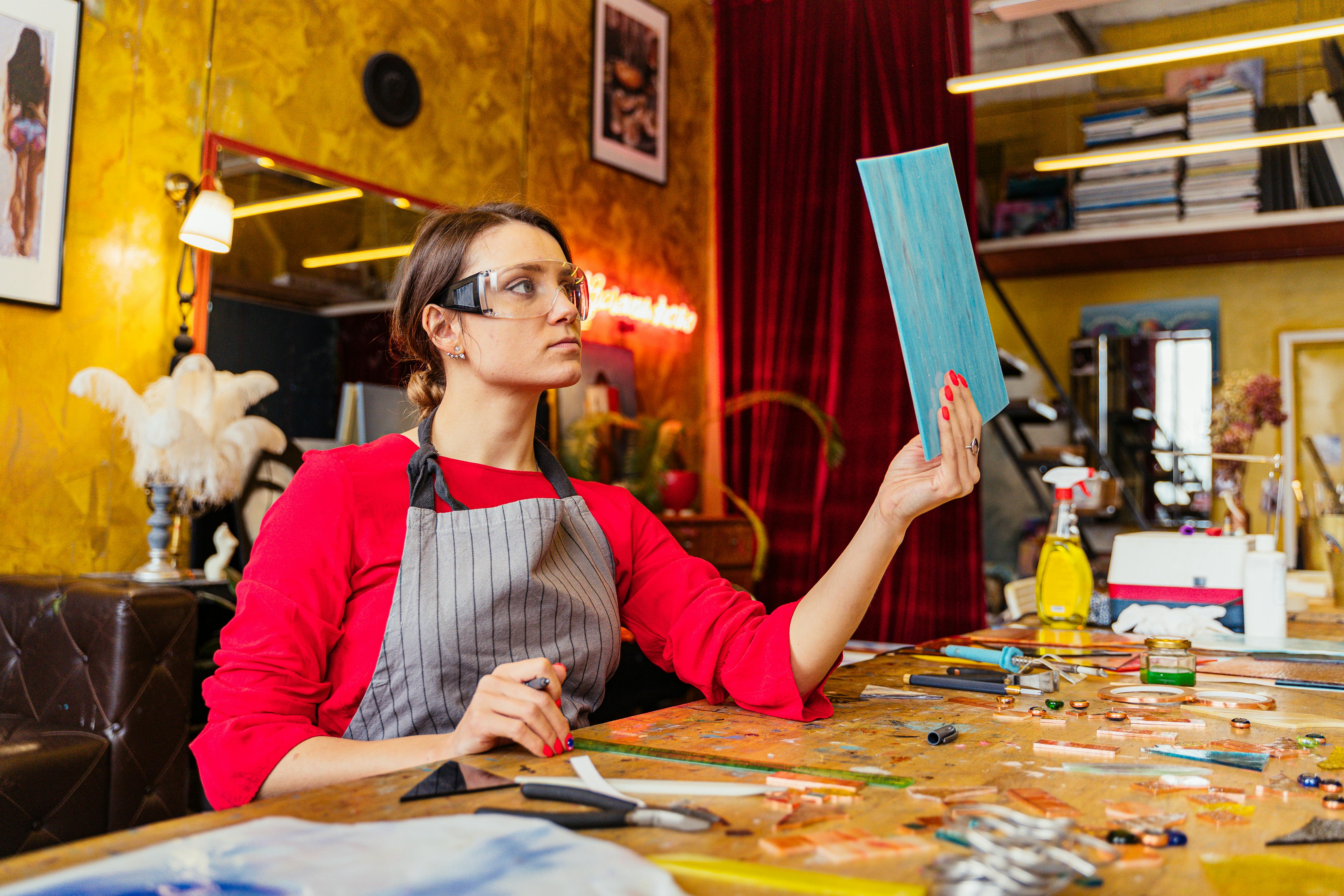
The exploration of identity—encompassing race, gender, and sexuality—is a pivotal aspect of contemporary art. Artists like Cindy Sherman and Shirin Neshat use their photography and film work to critique and redefine gender roles and societal norms. Sherman’s series of self-portraits challenge stereotypical portrayals of women, while Neshat’s works delve into the complexities of gender in Islamic cultures[1].
The art world's increasing focus on intersectionality reflects broader societal debates around identity, aiming to foster inclusivity and promote diverse perspectives[4]. Gender parity and the recognition of female artists have also gained momentum, contributing to a more equitable art scene where creativity transcends gender boundaries[3].
Environmental Concerns and Ecological Art

Environmental sustainability is a prominent theme in contemporary art, reflecting global concerns about climate change and ecological degradation. Artists like Olafur Eliasson and Agnes Denes use their works to raise awareness about environmental issues. Eliasson incorporates natural elements such as ice and water in his installations to confront viewers with the realities of global warming, while Denes juxtaposes natural and urban settings to comment on societal priorities[1].
In 2024, many contemporary artists are introspectively re-evaluating the cultural and environmental impacts of their practices, placing future generations at the core of their considerations. There is an increasing emphasis on sustainable practices, with artists using recycled materials and addressing ecological themes through their works[3][6].
Intersection of Art and Technology

Advancements in technology are reshaping the contemporary art landscape. Digital art and the rise of Non-Fungible Tokens (NFTs) have revolutionized the art market, providing new mediums for artists and redefining how art is created, sold, and experienced. Artists are utilizing immersive experiences, augmented reality, and virtual installations to push creative boundaries[3][4].
The integration of technology not only enhances viewer engagement but also raises important questions about artistic creation and valuation. Blockchain technology and AI are influencing how artworks are authenticated and valued, often prioritizing social factors such as the artist's reputation over the visual qualities of the artwork itself[9].
Migration, Displacement, and Social Struggles
Contemporary art frequently engages with themes of migration and displacement, underscoring the global refugee crisis and national identity issues. Ai Weiwei's 'Good Fences Make Good Neighbors' installation in New York, for instance, used fences and cages to comment on the plight of refugees and sparked public discourse about borders and freedom[1].
This thematic emphasis is part of a broader recognition of art’s role in expressing and addressing the complex experiences of displacement, conflict, and hardship. Artists from various backgrounds utilize their works to highlight the resilience and struggles of displaced communities, fostering empathy and deeper understanding[8].
Conceptual and Minimalist Trends

Conceptual art, focusing on ideas over traditional aesthetics, and minimalist art are experiencing a resurgence in 2024. These movements encourage viewers to engage with the underlying ideas behind the art rather than the visual aspects alone. This approach reflects a growing preference for simplicity and subtlety in conveying complex messages[4].
Influence on Cultural and Global Awareness
Art education plays a significant role in promoting cultural and global awareness, exposing learners to diverse artistic traditions and prompting them to reflect on societal issues. By analyzing works that address inequality, discrimination, and environmental crises, students develop critical thinking skills and empathy, enhancing their understanding of different cultural contexts[2].
Artists, as cultural architects, continue to challenge established norms and foster inclusive narratives that reflect the diversity of human experience. This drive towards inclusivity enhances the richness of artistic expression and strengthens community engagement[7].
Economic and Community Impact

Art significantly contributes to both cultural enrichment and economic development. Through exhibitions, performances, and the creation of intellectual properties, artists drive economic growth and foster vibrant, innovative communities[2][7].
Strengthening community engagement through art education and public art initiatives also promotes social cohesion and cultural understanding, encouraging active participation and civic responsibility[2].
Conclusion
Contemporary art today serves as a mirror to society, reflecting and addressing pressing social, political, and environmental issues. It is a dynamic field that not only critiques and challenges societal norms but also fosters inclusivity, promotes dialogue, and inspires change. From addressing social justice and identity to engaging with environmental concerns and integrating technological advancements, contemporary art continues to shape and be shaped by the evolving cultural landscape.
Let's look at alternatives:
- Modify the query.
- Start a new thread.
- Remove sources (if manually added).
- Request a manual search from our human research team.
Get more accurate answers with Super Search, upload files, personalised discovery feed, save searches and contribute to the PandiPedia.
Animal instincts are inherent inclinations of living organisms toward specific complex behaviors, primarily consisting of inborn elements. These behaviors are often performed without prior experience or learning and can be observed in various species. For example, newly hatched sea turtles instinctively move toward the ocean, while marsupials climb into their mother's pouch at birth. Other instinctual behaviors include animal fighting, courtship rituals, and nest building[1].
In evolutionary psychology, a concept known as the 'four Fs' summarizes the basic drives or instincts of animals, which include fighting, fleeing, feeding, and mating. These motivations are linked to hormonal activity in the hypothalamus and play a crucial role in survival[2].
Overall, instincts are fixed patterns of behavior that are generally invariant within a species, differing from simple reflexes which are straightforward responses to stimuli[1].
Let's look at alternatives:
- Modify the query.
- Start a new thread.
- Remove sources (if manually added).
- Request a manual search from our human research team.
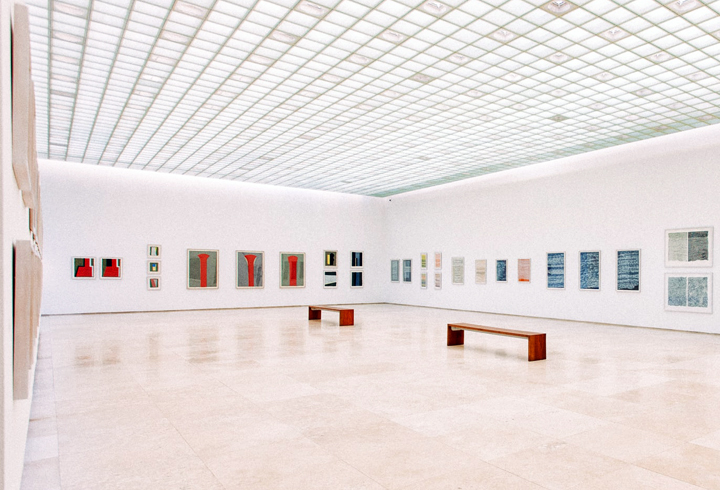
Visual art can be categorized into three main genres: decorative, commercial, and fine art. Decorative arts are often both aesthetically pleasing and functional, including crafts like pottery and textiles, while commercial art is created for monetary gain and includes advertising and corporate branding[2].
Fine art is created primarily for its visual appeal and does not prioritize utility, allowing for greater creative expression. This category encompasses traditional forms such as painting and sculpture but also includes modern interpretations and movements that challenge conventional definitions of art[5]. Overall, visual art includes a diverse range of styles and techniques, reflecting the broad spectrum of human creativity[1][4].
Let's look at alternatives:
- Modify the query.
- Start a new thread.
- Remove sources (if manually added).
- Request a manual search from our human research team.
:max_bytes(150000):strip_icc()/man-laughing-with-father-during-family-bbq-1014771064-0a1e97b6237c41efa4173f7560305760.jpg)
People use humor as a coping mechanism because it helps relieve the burden of stressful emotions and can shift perspectives on difficult situations. Humor enables individuals to look at circumstances differently, recognizing absurdities that may otherwise feel overwhelming. This process, known as reappraisal, allows for a lighter perspective on stressors, promoting resilience and emotional health[1][2][6].
Additionally, humor fosters social connections, enhancing feelings of support and decreasing psychological distress. However, the type of humor used is crucial; positive humor can improve mood and social support, while self-defeating humor may lead to increased stress and less social connection[2][6].
Let's look at alternatives:
- Modify the query.
- Start a new thread.
- Remove sources (if manually added).
- Request a manual search from our human research team.
Let's look at alternatives:
- Modify the query.
- Start a new thread.
- Remove sources (if manually added).
- Request a manual search from our human research team.


